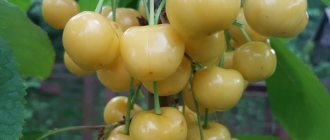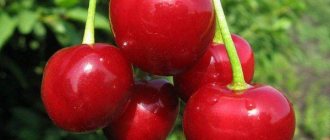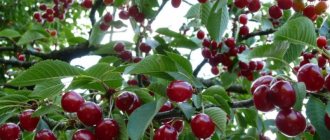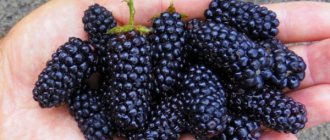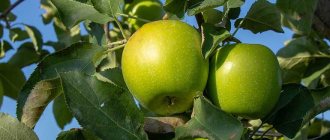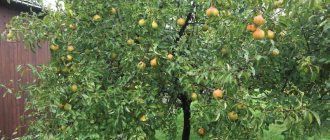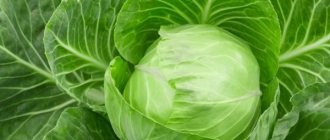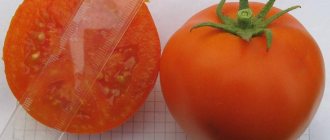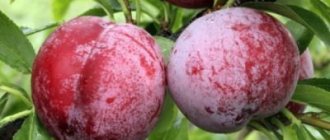General Description of Vietnamese Milk Melon
This is an early ripening, heat-loving species belonging to the Pumpkin family. It grows better in the sun than in the shade and does not tolerate excess moisture in the soil. But temperature changes will not greatly affect the yield. All varieties of the species are distinguished by productivity and resistance to unstable weather conditions. The culture was developed in Vietnam and later migrated to other Asian countries.
The fruits are small (weight does not exceed 200 g), bright orange, striped. One plant produces up to 20 or more of these colorful pumpkins over the summer. Their taste is sweet, the flesh is juicy and aromatic, the taste depends on the variety. It can be melon, pineapple, nutmeg.
The plant's vines can reach more than 3 m in length. The leaves are large, palmate, light green in color, the plant is densely covered with them. Vietnamese melon is grown horizontally on the ground or tied vertically. In the photo you can see that in the second case, growing and harvesting Vietnamese melon is more convenient.
Harvesting and application
The ripeness of Vietnamese is determined by its honey aroma and firm peel. The fruits should be elastic, the stalk should be dry. When struck lightly, a ripe melon produces a dull sound. The early ripening variety is not suitable for storage; the fruits are consumed immediately after harvest.
Smoothies, jam, and jelly are made from melon. Its taste goes harmoniously with other fruits and berries - watermelon, pear, bananas, apples.
Vietnamese is also used for preparing salads and side dishes. Housewives prepare a salad with chicken fillet, melon pulp and avocado, or make the famous Italian appetizer of melon and Parma ham.
Interesting . Roasted melon seeds are a common snack in African cuisine.
Varieties
Vietnamese milk melon has 2 popular types: Ho Chi Minh City Grandfather's Gift and Yang Jun. They are early ripening and produce high yields.
Gift from Ho Chi Minh's grandfather
The culture was obtained in Vietnam and belongs to the Pumpkin family. This is an early ripening species that can be cultivated in greenhouses, greenhouses, and open ground.
Vietnamese melon pumpkins, a gift from Ho Chi Minh's grandfather, are small: the weight ranges from 150 to 250 g. The skin is dense, bright, orange-red, covered with longitudinal bright yellow stripes. The tender pulp is juicy, pale yellow, sweet, with a strong characteristic aroma. Among the sweet melon notes, the aroma of pineapple is clearly visible, which is why the variety is sometimes called pineapple. Vietnamese melon Grandfather's Gift is often used as an ornamental plant for fences and gazebos, its fruits look so bright and unusual.
Yan Jun
This variety is mid-season and also has high yield. In bright light and well-warmed soil by the sun, fruiting begins 35-40 days after sowing the seeds.
The shoots (lashes) of the crop can grow up to 3 and 3.5 m in length. The leaves are large, veiny, fleshy. On average, the weight of the fruit is 200 g, but larger specimens weighing up to 350-400 g can be found. The pulp has the color of baked milk and a pronounced nutmeg aroma.
Important! This culture tolerates temperature fluctuations quite painlessly.
What is special about melon?
Also check out these articles
- Apple compote
- How to sprout wheat for chickens
- Cranberry jam
- Quail egg incubator
The main feature of culture is its benefits. This type of melon has a large number of useful substances in its composition, due to which it is even prescribed for medicinal purposes and for pregnant women. The fruits help the gastrointestinal tract, improve appetite, and help with pancreatitis and gastritis. But besides this, there are a number of advantages that every gardener should know about.
Features of Vietnamese melon
- Vietnamese melon can be grown in greenhouses and in open ground.
- The plant is resistant to late spring frosts, summer drought and humidity changes, unlike most melons.
- This variety is resistant to most known diseases and pests.
- The plant is high-yielding.
The negative features of Vietnamese melon include the sensitivity of the fruit. It is not recommended to touch them at all, since even the slightest damage can cause the fruit to rot.
Nursing mothers, children and people with diabetes should not get carried away with the fruits, as they contain a lot of sugar and some other substances that can adversely affect the health of the newborn.
Characteristics of Vietnamese melon
All varieties of Vietnamese (milk) melon have excellent taste, are easy to care for, and are suitable for growing in the central and southern regions.
Description of exotic fruits
The shape of the fruits is round and oval, their weight does not exceed 200 g. This disadvantage is compensated by the high fertility of the species. Ripe fruits are bright orange with longitudinal light yellow stripes. Melon pulp is pale yellow, aromatic, sweet.
Productivity
Despite the small size of the fruits, 1 Vietnamese melon bush can produce from 20 to 30 pumpkins over the summer. Their number depends on the amount of sunlight and moisture the plant receives. Also, Vietnamese melons are sensitive to fertilizing and respond well to fertilization.
Advantages and disadvantages
The only negative qualities of melon from Vietnam include the small size of its pumpkins. In contrast to the only drawback, the Vietnamese melon variety Grandfather's Gift from Ho Chi Minh City has many positive qualities.
Advantages of Vietnamese hybrids:
- precocity;
- high productivity;
- high taste of the pulp;
- decorativeness of fruits;
- resistance to diseases and pests;
- unpretentiousness.
After the Vietnamese melon seedlings, Gift from Ho Chi Minh Grandfather, take root in the open ground in early June, the first harvest is already harvested in July. After removing the ripened fruits, the plant forms new ovaries. This process continues until the first frost. Thus, you can enjoy Vietnamese melons (Gift from Ho Chi Minh City Grandfather) throughout the summer months.
Diseases and pests
Vietnamese melon Gift from grandfather Ho Chi Minh City is damaged:
- melon aphid;
- wireworm;
- gnawing cutworms;
- spider mite;
- melon fly.
The melon aphid feeds on plant sap and multiplies quickly. Found on the stem, lower part of the leaf. The result of the appearance of aphids will be yellowing of leaves and flowers, and their shedding. You can fight the pest by regularly weeding the weeds, treating the plants with 10% karbosof, and also with a soap solution: 10 - 12 g of soap is stirred in 10 liters of water.
Spider mites weave thin webs that can be found in the axils of leaves. They live under the leaves and feed on sap. To combat the pest, they maintain proper crop rotation, weed regularly, and dig up the soil well in the fall.
Wireworm is a small yellow worm. It gnaws the stems, causing the entire plant, Gift from Grandfather Ho Chi Minh City, to wither. Such a pest must be combated by regular weeding, loosening, and removing weed residues from the site.
Gnawing cutworms live in the ground or on its surface. They feed on the sap of the plant and damage the stem. To prevent this, it is necessary to observe correct crop rotation, dig up the soil well in the fall, and weed regularly.
The melon fly pierces the skin of the fruit and lays larvae inside, which leads to rotting. To combat the pest, chemical agents are used - Rapier and Kemifos solutions. They are diluted at the rate of 10 ml for every 10 liters of water.
Vietnamese melon Grandfather's Gift Ho Chi Minh City is resistant to most diseases due to its short growing season. It can only be damaged by:
- peronosporosis;
- powdery mildew;
- fusarium wilt;
- anthracnose;
- root rot.
Powdery mildew forms a whitish coating on the green part of the plant. At first small, the spots soon grow, which leads to gradual withering and drying out of the leaves. To combat the disease, it is necessary to remove the affected areas and treat healthy plants with colloidal sulfur - 50g per 10l.
Fusarium wilt affects sprouts and, occasionally, adult plants and is manifested by a change in leaf color. Plants die after 10 days, so the fight against the disease must begin immediately. The affected sprouts are burned, the rest are treated with a solution of potassium chloride.
Anthracnose appears as pink, gradually growing spots. The disease can affect fruits. To eliminate the disease, you need to loosen the soil and treat the plants with a 1% solution of Bordeaux mixture.
Downy mildew, or downy mildew, forms yellowish spots. Treatment with a solution of potassium permanganate will protect the seeds from heating in warm water. To combat the disease, you need to remove the affected plants, treat the rest with urea: 1 g per 1 liter every 10 days.
Once root rot has appeared, it is too late to save the plant. For prevention, it is necessary to pickle the seeds before planting in a 40% formaldehyde solution. Timely loosening, proper watering, and removal of weak plants will also help.
Growing Vietnamese melon seedlings
Planting seeds directly into open ground is not recommended, especially in the central regions. First it needs to be germinated and hardened. You can also grow Vietnamese melon seedlings at home.
Recommended timing
Seeds begin to germinate in mid or late March. By May you can already get well-grown, strong plants. At the end of spring or early June, the seedlings are transferred to open ground. Before this, the seedlings are hardened off by taking them outside every day for 15-20 minutes.
Selection of containers and soil preparation
For sowing, cups made of peat are chosen. Subsequently, they can be transferred to the site along with the seedlings without injuring the root. This will speed up the establishment of seedlings in a new place and eliminate the occurrence of diseases. Each seedling needs a peat container measuring at least 10x10 cm.
The soil for seedlings is light and loose. To do this, mix turf soil with peat, sand, and humus in equal parts. All components are thoroughly mixed, the finished substrate is ground or sifted. You can purchase a ready-made soil mixture for melons.
Landing rules
For sowing, you need seeds that were collected more than 2 years ago. Choose large, full-bodied seeds. Before planting, they are sent to a cool room for hardening for several days. 2-4 days before planting in the ground, the seeds are soaked in warm water, covered with glass and placed in a warm, bright place for germination.
Sowing melons Gift from grandfather Ho Chi Minh City:
- Peat cups are filled with soil mixture, watered with warm water, and 2.5 cm indentations are made.
- The seeds of Vietnamese milk melon are immersed in the holes with their spout down and their sprout up.
- They are crushed on top with a thin layer of sifted earth and sprayed with a spray bottle.
After planting, the cups with seed material are covered with cling film and placed in a bright, warm place. After 3 days, the film is removed.
Important! The artificially created greenhouse effect stimulates the growth of seedlings.
Seedling care
For good growth of seedlings of the Vietnamese Grandfather Ho Chi Minh City melon, it is important to maintain the temperature regime. The air temperature in the room should not fall below + 25 ᵒC. Humidity is also important: more than 55%. To do this, seedlings are sprayed daily - morning and evening.
The soil is moistened only after the top layer has completely dried: Ho Chi Minh City's Grandfather's Gift melon does not tolerate stagnation of water, the roots begin to rot. Before watering, the water is allowed to settle for 24 hours; it should be at room temperature or a little warmer. Watering (or more accurately spraying) the soil is done using a spray bottle.
Daylight hours for Vietnamese melon seedlings, Gift from Grandfather Ho Chi Minh City, must be at least 14 hours. To do this, containers with seedlings are placed on southern window sills, and additional lighting is turned on in the evening.
Important! As soon as the third leaf appears on the seedlings, pinch it off. This will give impetus to the development of the root system.
Transplantation into the ground
After 40-50 days from the moment the seeds are planted, the Vietnamese melon seedlings will be strong enough to be transferred to open ground. If there are no night frosts at the time of planting, the seedlings do not need shelter at night. A week before transferring the plants to the summer cottage, they are hardened off by taking them out into the open air for half an hour.
Melon planting algorithm Gift from grandfather Ho Chi Minh City:
- Choose an open, well-lit area.
- The soil should be dug up with humus and wood ash added and moistened.
- Holes are dug with a size similar to the volume of peat cups. The distance is 60 cm between each planting hole.
- Plants are rooted in the evening or during the day on a cloudy day.
- Each seedling, along with a glass, is lowered into a hole, covered with earth, and watered.
Important! If the likelihood of night frosts remains, the seedlings are covered with film.
General information about cultivating the variety
Today, melon is grown not only in the southern regions, but also in the regions of central Russia.
Among the many varieties, vegetable growers especially liked the Vietnamese melon. It has excellent taste, early fruit ripening and excellent yield. The main thing is to properly care for the plant. Care, in principle, is not particularly difficult and consists of timely watering, forming a bush, applying fertilizers and treating the crop with special substances against harmful insects and diseases. You will find a lot of useful information in the article: Pumpkin during breastfeeding - basic recommendations.
How to grow Vietnamese melon
A month after the Ho Chi Minh City Grandfather’s Gift melons take root, they are thinned out. Leave no more than 3 strong lashes on each.
Every other day, in the morning, Vietnamese melons are watered, making sure that the water does not stagnate at the root of the plant. The water should be settled and warm.
Before flowering begins, 2 times a month, complex mineral fertilizers (with potassium or nitrogen) are applied under the root of the Vietnamese melon.
As soon as the pumpkins begin to form, fertilize with ammonia or phosphorus once. In the future, it is not advisable to feed Ho Chi Minh City's Grandfather's Gift in order to avoid the wild growth of foliage.
The side shoots of the Vietnamese Grandfather Melon of Ho Chi Minh City are removed once a week. Only 3-4 strong lashes should be left.
Excess ovaries are also removed; there should be no more than 7 of them on each lash. This stimulates an increase in the weight of the fruit.
After watering and fertilizing, as soon as the moisture is absorbed, loosen the soil. Do this carefully so as not to damage the stem.
Features of plant care
Watering Despite its drought resistance, during the flowering and ovary period, watering the Vietnamese melon should be regular. It is important not to let water accumulate in the beds. This will have a bad effect on both the fruits and the vines of the plant. It is better to water with warm, clean water. Cold water can lead to rotting of the root system.
Feeding Every 20 days it is recommended to feed the growing bush. Before flowering, nitrogen and potassium fertilizers are used, and during the onset of ovaries, phosphate and ammonia fertilizers are used. Excessive feeding can lead to vigorous growth of leaves and a sharp decrease in the number of ovaries of Vietnamese melon.
StepsynchingSide shoots must be removed as they appear. This allows you to grow 2 - 4 strong fruiting vines. It is also recommended to pinch off excess ovaries, leaving only 5 -7 pieces on the vine. Thanks to this, the fruits ripen faster and their weight increases significantly.
Loosening It is advisable to loosen the soil after each watering of the plant. This promotes the penetration of oxygen to the roots. Loosening should be superficial, due to the shallow location of the root system. Loosening should be carried out especially carefully after fertilizing.
TreatmentDespite the fact that the crop is resistant to some diseases, it is recommended to spray it before the ovaries appear with various complex products against pests and diseases. You can use traditional methods.
Gardeners to gardeners
Melon is the sweetest and most aromatic crop in the pumpkin family. There is hardly a person who would not love this once exotic, southern fruit.
Melon is good both fresh and in the form of jam, jam, and also dried or candied.
They say that candied melon was served only to the beloved wives of sheikhs, padishahs and sultans, this delicacy was so highly valued.
We have already told you in detail about the origin of the northern melon, its beneficial properties and agricultural technology in our article:
“How to properly grow melon in the garden.”
But clear instructions are not always suitable when the unpredictable vagaries of northern summer weather interfere with the growing process. For example, last year almost 80% of gardeners did not grow melon.
Even in polycarbonate and glass greenhouses, she did not have enough heat and sunlight. But it was possible to save the melon harvest by knowing some of the features of growing this crop.
Based on your numerous requests, today we will talk about these features and tell you how to properly grow a melon, regardless of any weather anomalies.
CHARACTERISTIC FEATURES, KNOWING WHICH ALLOWS YOU TO GROW NORTHERN MELONS IN ANY CONDITIONS
Landing dates . Today, a lot of early ripening and frost-resistant varieties of melon have been bred. But from them you need to choose not only the most delicious and unpretentious, but also the very early ones. These are exactly what we offer you in our Spring 2020 catalogue.
Melon can ripen in the northern regions of our country only if it is grown through seedlings. We described in detail how to do this correctly in our article: “How to properly grow melon in the garden.”
The best time for sowing early ripening melon seeds for seedlings is May 15 - 20. The growing season of this melon crop is shorter than that of watermelon. And you can plant ready-made seedlings in a permanent place within 18 days after germination.
Three-week-old seedlings are considered the best. Then it will already be overgrown. It will begin to stretch out and will take root worse.
Mandatory conditions for normal growth of melon . First of all, she needs a lot of sun and warmth. If you plant a melon in a greenhouse, then nothing should shade it from the sun's rays throughout the day.
The same is true in the garden. No trees, bushes or other tall plants nearby!
Soil is extremely important for melon. They should be very fertile, rich in organic matter, loose, light and only neutral (pH 7.0 - 7.5). Even soil with a slightly alkaline reaction is allowed.
Melon beds should be made high (not lower than 40 cm) and wide. It is better to plant seedlings in a checkerboard pattern at a distance of at least 1 m from each other (for ease of care).
FEATURES OF GROWING MELONS IN THE NORTHERN REGIONS
In a greenhouse or in a garden bed? Gardeners often ask: “How and where is it better to grow melons - in a greenhouse or in an open garden?”
Firstly, even when planting melon seedlings in an open bed, it is necessary to install high arches above it, and put a film next to it, so that in case of a sharp cold snap, strong winds, heavy rains and other abnormal phenomena, the plants can be quickly and reliably protected from any vagaries of the weather.
Taking into account the lessons of last summer, it is probably better to immediately plant melons in polycarbonate or film greenhouses. On hot days, the film can be lifted and all doors and windows in the greenhouse can be opened to let pollinating insects in.
However, as a rule of thumb, you will still need to artificially pollinate your melons.
To do this, you need to pick a male flower and successively combine it with the female ones, pollinating them with fresh pollen. After pollinating 10 female flowers, pick a new male one.
After what crops should melon be planted? Melon is very capricious in relation to previous crops. You can do everything right, but if you plant melon seedlings, for example, after any other pumpkin crops or carrots, you will sharply reduce the future harvest.
The best precursors for melon: onions, garlic, nightshade and legumes, as well as aromatic herbs and other green plants.
You cannot grow melons in one place for more than 6 years in a row. When cultivating this crop, it is imperative to observe the most basic crop rotation. Melons can be returned to their original place after 5 years.
Proper watering . Remember that melons need to be watered only with well-heated water (its temperature should not be lower than +25 degrees) and only in the evening.
In general, melons do not tolerate high air humidity and standing irrigation water around the vine. Plants need frequent watering at the beginning of the growing season until the end of flowering (water 3 times a week).
After the fruits form, sharply reduce watering (to once a week), otherwise the melons themselves will not be so sweet and sugary.
Formation . It is very important for obtaining a good harvest of large, sweet melons. Unlike watermelon, melon produces fruit only on its side shoots. Therefore, pinch its central stem above the fifth leaf so that it begins to bush intensively.
Leave one ovary on each lash. Then you will get 3 - 4 for each bush. The plant has enough strength to grow large sweet melons from them. A larger number of fruits will already be defective.
Remove lashes that do not have ovaries immediately. And those that you leave, cut off above the third leaf after the first ovary.
If you do everything as we recommend, you will have a wonderful, high-quality harvest!
How to care for fruits before harvesting? To prevent ripening melons from rotting, place non-woven covering material or planks under them. From time to time, carefully turn the fruits from one side to the other. Then they will ripen faster and will be even and neat.
Don't cut all the melons at once. Take the first ones to ripen one at a time for a delicious fresh dessert. But by mid-September the entire harvest should be ready, and then it can be harvested.
THE BEST VARIETIES OF MELONS FOR GROWING IN THE NORTHERN REGIONS
Now you know how to properly grow melon in the short northern summer.
We told you about all the subtleties and mistakes that you can make due to inexperience or ignorance when cultivating this amazingly tasty, aromatic and sweet crop.
The most important thing remains - to choose the right variety or hybrid with a short growing season, the best taste, unpretentious and perfectly tolerant of all the “whims” of the unpredictable northern summer.
We offer you the best varieties and hybrids of “northern” melon from our unique collection, which we have collected over many years, testing existing and emerging melon varieties and hybrids in our experimental fields.
Retro series:
Collective farmer.
Sugar line:
Ducral F1, Dakaro F1.
Our collection:
Silver hoof F1, Natalina, Summit F1, Dina, Oksana F1, Torpedo, Autumn, Gift of Grandfather Ho Chi Minh (Vietnamese), Malaga F1, Dune, Ethiopian, Rainbow, Diamond F1, Delight, Credo F1.
Any of these melons will undoubtedly delight you with their extraordinary taste and aroma, as well as ease of care, immunity to disease, high resistance to all weather anomalies and early ripening (mid-August - early September), which depends on the variety.
You can buy all of the above varieties and hybrids from us today!
European melons: varieties, names and photos of popular types
Particularly popular in the East are early-ripening Khandalyaki melons, with their round shape and small size very reminiscent of the most famous melon variety in our country, Kolkhoznitsa.
As you can see in the photo, melons of the Kolkhoznitsa variety are small, weighing up to 2 kg, fruits with white or yellowish pulp, which even in the difficult climatic conditions of Russia pick up a good amount of sugar. Despite the emergence of new hybrids, thanks to its unpretentiousness and early ripening, the Kolkhoznitsa variety, pictured in the photo at the time of harvesting melons, is the most widespread melon crop of this genus.
The photo with the names and varieties of melons at number 6 shows another ancient variety of plant with an enviable and difficult history. This is a musk melon originally from Afghanistan or Iran, which, by the will of fate, came to Europe through Armenia and Turkey, or rather to the table of the Head of the Catholic Church.
The taste of the Cantaloupe melon hidden under the thick skin of the bright pulp, as in the photo, was so liked by the Pope that the fruits of this variety have since been named after the papal estate in Cantalupo in Sabina, where an entire melon plantation was established.
Today, Cantaloupe melon is the most famous and sought-after variety in Europe and the USA, which has served breeders a lot to create new productive and unpretentious varieties.
As you can see in the photo, the Cantaloupe melon has an oval or slightly flattened shape and is covered with a dense network of whitish cracks.
This makes Cantaloupe similar to the Ethiopian melon. This melon has oval-rounded fruits, like a cantaloupe, with a rough lobed surface and reach a weight of 3 to 7 kg. But if the “Papal melon” has a rich orange flesh, then according to the description, the Ethiopian melon has white, very juicy and sweet flesh.
Banana melon or the elongated variety of cantaloupe, which is gaining popularity in the West, growing up to 80 cm in length, has a delicious taste and aroma. Moreover, the fruit not only resembles a banana in shape and color of the pulp, but also the taste of melon is just as soft, buttery and delicate. Try growing this unusual variety of melon in your garden next to potatoes, carrots and other vegetables.
The closest relative of this unusual variety is the Silver melon or Armenian cucumber, which has common roots with cantaloupe, but is so different from the usual melon fruits.
From the cultivated melon, the ripe fruit, up to 70 cm long and weighing up to 8 kg, has only a melon aroma left, and the Armenian cucumber is eaten while still green. Moreover, the plant is extremely unpretentious to growing conditions and bears fruit until frost.
Benefits and harms
Pumpkins of this culture have many beneficial qualities for human health. Small fruits contain many useful vitamins. Not a single plant can boast of having so many useful substances. The main beneficial properties of Vietnamese melon fruits:
- good absorption by the body;
- improving the functioning of the entire digestive tract;
- eliminates heartburn;
- this product contains a lot of fiber that is beneficial for the body;
- when consumed, cholesterol levels decrease;
- The pulp contains many useful vitamins, as well as macro and microelements.
- the fruits contain folic acid, which is especially useful during pregnancy;
- nutritionists have developed a special diet based on Vietnamese melon;
- removes harmful substances and poisons from the body.
